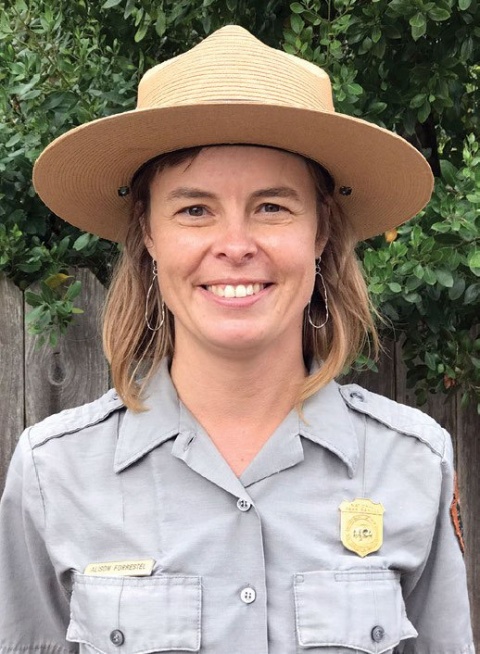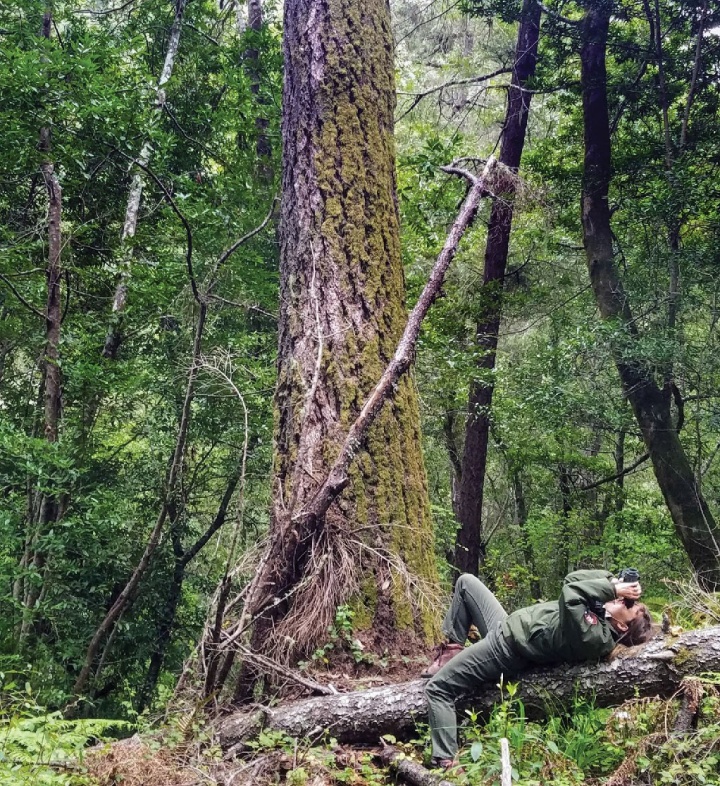Columbia College | Columbia University in the City of New York
The Golden Gate Guardian

PHOTOGRAPHS COURTESY ALISON FORRESTEL ’00
For Forrestel, no two days are the same. Her team could be removing invasive plants, monitoring the health of an endangered species, engaging the local community as volunteers or restoring a damaged ecosystem within the park. Nestled in a major urban center (GGNRA is actually a collection of sites that spans three counties in the San Francisco Bay Area), the park has given Forrestel a unique experience as a leader in the National Parks Department as she balances the needs of the wild park and the vibrant cityscape it calls home.
She is passionate about the GGNRA’s native plant and animal species and is proud of the ecological wins her team have achieved, like the restoration of the Franciscan manzanita in the park. After a single Franciscan manzanita shrub — which was thought to be extinct in the wild — was found during routine brush clearing for a highway construction project, Forrestel’s team launched a preservation effort using cuttings from botanical gardens to create plantings to join the lone wild shrub. Thirteen years later, the Franciscan manzanita is back, with roughly 100 shrubs growing in a self-sustainable colony in the Presidio and San Francisco sections of the park.
In addition to its diverse plant life, Forrestel says the park is also home to amazing wildlife, many of the species endangered, including the San Francisco garter snake (“one of the most endangered reptiles in North America — it’s really pretty, with blue stripes on its sides,” she says), Northern spotted owls, the Mission blue butterfly, Western monarch butterflies and Coho salmon.
Forrestel is leading efforts to support the growth of safe habitats for the latter two. For the Western monarch butterfly, this means making sure their food source, the park’s milkweed plants, are maintained and thriving, as well as improving the habitats where the butterflies winter. The Coho salmon rescue effort, which began in 2019, is a huge undertaking in the park’s Muir Woods section. Forrestel says that in the 1930s, the Civilian Conservation Corps dug out and rerouted a creek where the Coho live, placing boulders along both sides so it wouldn’t flood the park’s visitor amenities. However, this intervention destroyed the deep, dark pools the Coho need to thrive; nearly 100 years later, Forrestel worries the fish are “on the brink of blinking out.” She and her team are removing the boulders and working to restore the stream to its natural state, in the hopes that the Coho will again thrive.

Pondering her role as an environmental steward, and what it means to work at a National Park, Forrestel notes, “I think what motivates people to take action to protect nature and our environment is ultimately the love and joy we all find from being outside. The parks are amazingly valuable because they give people opportunities to be immersed in nature and feel that connection to the natural world.”
Issue Contents
Published three times a year by Columbia College for alumni, students, faculty, parents and friends.
Columbia Alumni Center
622 W. 113th St., MC 4530, 6th Fl.
New York, NY 10025
212-851-7852
cct@columbia.edu
Columbia Alumni Center
622 W. 113th St., MC 4530, 4th Fl.
New York, NY 10025
212-851-7488
ccalumni@columbia.edu

